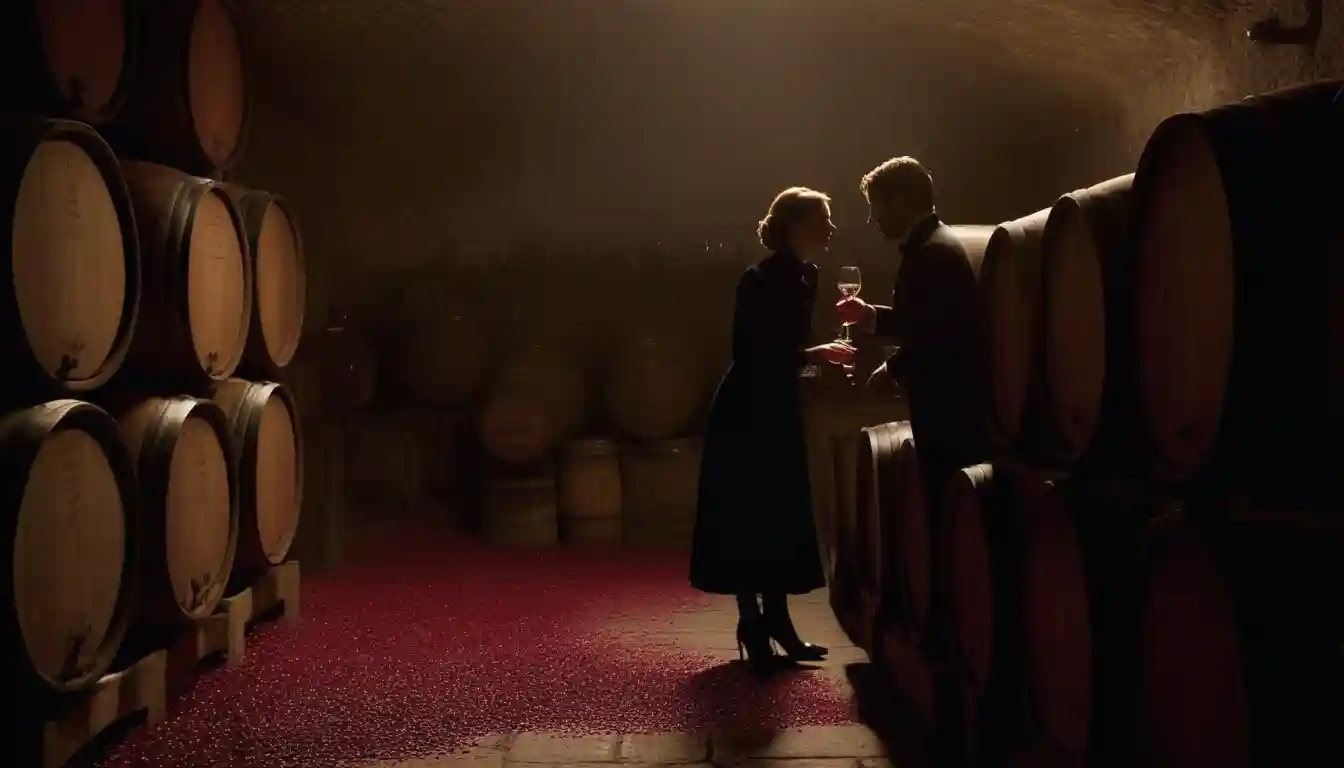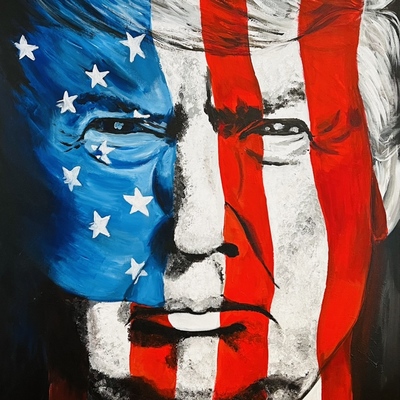
US Imposes New 15% Tariff on European Wine and Spirits Starting August 1
Spirits in Turmoil: New EU Wine Tariffs Reshape $5 Billion Market Overnight
A cloud of uncertainty hangs over the gleaming rows of European wines and spirits on American shelves as distributors rush to beat today's midnight deadline. Tomorrow, August 1, marks the implementation of a new 15% tariff on European Union alcoholic imports—a seismic shift for a $5 billion industry that has long enjoyed relatively unfettered access to thirsty American consumers.

The Eleventh-Hour Scramble
In the bustling Port of Oakland, importer David Ramirez watches anxiously as dockworkers unload the last of his company's pre-tariff shipments. "It's absolute chaos," he says, gesturing toward stacks of French and Italian wine cases. "We've tripled our normal volume this month, betting that these tariffs won't last forever. But who knows in this climate?"
The 15% tariff, announced just days after a high-stakes meeting between U.S. President Donald Trump and European Commission President Ursula von der Leyen on July 27, represents a compromise from the previously threatened 30% blanket duty. Yet for an industry operating on razor-thin margins, even this reduced rate sends tremors through global supply chains.
Dancing Between Raindrops: The Political Choreography
The tariff announcement follows months of increasingly tense trade negotiations. What makes this particular duty noteworthy is its carefully calibrated nature—neither punitive enough to trigger immediate EU retaliation nor gentle enough to appease European producers.
"This is classic Trump administration trade strategy," explains an international trade attorney who requested anonymity due to ongoing client involvement. "By setting the rate at 15% rather than the threatened 30%, they've created negotiating space while still delivering on promises to domestic producers."
European officials maintain that achieving exemptions for wine and spirits remains a top priority. "It is not our expectation that wine and spirits will be included as an exemption in the first group announced by the US," confirmed Olof Gill, spokesperson for the European Commission, signaling that these goods will indeed face the 15% ceiling immediately.
The Uneven Playing Field
For European producers already contending with the euro's strength against the dollar, the timing couldn't be worse. The currency headwind combined with the new tariff creates what one analyst calls "a perfect storm of competitive disadvantage."
Market data reveals the winners and losers emerging from today's turmoil:
American spirits giants like Brown-Forman (trading at $29.38, down $0.96) stand to benefit substantially, with 87% of their sales coming from the domestic market. Meanwhile, Diageo's ADR (trading at $102.82, down $1.47) shows investor concern about its heavy reliance on EU-distilled Scotch in its U.S. portfolio.
Premium Resilience vs. Mainstream Vulnerability
Industry analysts project remarkably different impacts across price segments. High-end Champagne and Cognac consumers may barely notice the change, with expected volume declines of just 0-2%. As one beverage industry consultant notes, "Luxury buyers don't flinch at a 5% price increase on their favorite Champagne."
The picture darkens considerably for mainstream products, however. EU wines retailing under $15 could see volume drops exceeding 10% as price-sensitive consumers pivot to alternatives from Chile, Argentina, and California.
"This creates a clear bifurcation in the market," explains a beverage industry economist. "Premium products with loyal followings will weather this storm. It's the middle-market European wines that face an existential threat."
Corporate Survival Strategies Emerge
Faced with the new tariff reality, European producers are deploying sophisticated countermeasures. Industry sources reveal four primary tactics gaining traction:
First, many companies have front-loaded shipments to beat the July 31 customs deadline. Bonded warehouses provide a 90-day grace period before tariffs come due—creating breathing room through October.
Second, producers with U.S. facilities are rerouting bulk wine for stateside bottling. Companies like Moët Hennessy and Pernod Ricard, with established American operations, can import unfinished product at lower tariff classifications.
Third, currency hedging has become essential. With the euro already strong at €1 = $1.18, the combined effect of currency and tariffs can push European products to 20% price disadvantages versus American alternatives.
Finally, producers are developing "Duty-Paid Editions" with lighter packaging and lower alcohol content, strategically reducing both freight costs and federal excise taxes to offset tariff impacts.
The Chess Game Beyond the Bottle
Looking past immediate market reactions, deeper structural changes loom. Industry insiders point to two developments accelerating under tariff pressure:
Corporate consolidation appears inevitable as margin-squeezed importers and distributors become acquisition targets. "Private equity firms are already circling vulnerable players," notes a merger specialist. "They can acquire these businesses at 6-7 times EBITDA, roll them into national platforms, and exit post-tariff at significantly higher multiples."
Contract bottling capacity in the U.S. has suddenly become a strategic asset. Analysis suggests a new 60 khl facility in wine-rich regions like Lodi, California could yield 15-18% IRR under five-year agreements with European houses seeking tariff mitigation.
Investment Horizon: Navigating the Uncertainty
For investors trying to decode this complex landscape, several themes emerge from market data and historical patterns:
American brown-spirit producers appear well-positioned to capture incremental shelf space as European alternatives retreat. Companies with minimal European exposure, like Brown-Forman and Constellation Brands, may see margin expansion in coming quarters.
The divergence between American and European producers creates natural pairs-trading opportunities. Analysts note the contrasting trajectories of Brown-Forman versus Diageo's ADR as particularly compelling.
For sophisticated investors, inventory-backed lending to importers could yield attractive risk-adjusted returns, with current rates approaching SOFR plus 550 basis points as importers seek liquidity.
However, caution remains warranted. Risk analysis suggests a 35% probability that tariffs could roll back before 2026, potentially triggering sharp reversals in tariff-beneficiary trades.
What Lies Ahead
Four key signposts will determine whether these tariffs represent a brief disturbance or lasting reconfiguration:
The upcoming U.S. Federal Register notice in mid-August will finalize affected product codes and any first-round exemptions. The EU Trade Council meeting on September 23 could establish new negotiating parameters, potentially offering semiconductor concessions in exchange for wine tariff relief.
Conference call season will provide crucial visibility into corporate guidance, with particular attention on European producers like Campari, Rémy Cointreau, and LVMH's Wine & Spirits division.
Finally, July's bonded-warehouse inflow data will reveal the industry's bet on tariff duration. If inbound containers exceed a 40% year-over-year increase, expect significant destocking pressure in Q4.
As one veteran wine importer summarized the situation: "A 15% duty sounds devastating compared to our typical margins, but the real killer is uncertainty. We can adapt to almost any stable environment—it's the constant policy shifts that make planning impossible."
For now, the clock ticks toward midnight, and with it, a new chapter in transatlantic trade relations.
Disclaimer: This analysis is based on current market data and historical patterns. Past performance does not guarantee future results. Readers should consult financial advisors for personalized investment guidance.